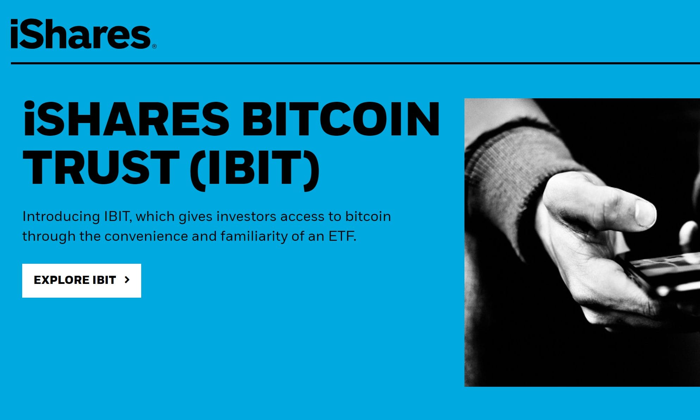The USDT Supply has made headlines recently, surpassing an impressive $150 billion as Tether USD (USDT) continues to dominate the stablecoin sector. This remarkable growth showcases the increasing demand for USDT amidst a robust cryptocurrency market, where stablecoins are proving their worth by facilitating transactional processes at an unprecedented scale. With USDT now representing 63% of the total stablecoin supply, its influence is evident, especially when considering the average weekly transfer volumes, which have reached over $521 billion. Such figures far exceed the combined volumes processed by industry giants like Visa and PayPal, highlighting a pivotal shift towards stablecoins in the financial landscape. As traditional payment platforms adapt to this evolving ecosystem, the dominance of stablecoins, particularly Tether USD, signifies a new era in digital transactions.
When discussing the supply of Tether USD, it’s essential to explore the broader implications of this surge in stablecoin adoption within the financial realm. Often viewed as a safe harbor in the fluctuating cryptocurrency waters, Tether, as a leading stablecoin, has established itself as a critical player in facilitating digital transactions. The expansion of digital currencies like USDT hints at a significant trend, where cryptocurrency is rapidly gaining traction over conventional payment systems, such as those offered by Visa and PayPal. This transformation not only emphasizes the role of alternative currencies in the marketplace but also reflects the increasing consumer trust in digital assets for everyday transactions. As stablecoin volume skyrockets and traditional giants take notice, the landscape of financial transactions is poised for a transformation that could redefine our approach to money.
USDT Supply Reaches New Heights
The Tether USD (USDT) supply has remarkably surpassed $150 billion, highlighting its significant role in the cryptocurrency market. This noteworthy achievement reflects the growing adoption of stablecoins as reliable instruments for digital transactions. As more individuals and businesses recognize the value of stablecoins, USDT is poised to maintain its leadership role, contributing to a broader ecosystem that emphasizes security and stability in financial exchanges.
With USDT representing approximately 63% of the total stablecoin supply, its influence is undeniable. This dominance is not just a statistical figure; it underscores the shift in consumer and investor preferences towards cryptocurrency solutions that offer stability amidst market volatility. As the demand for Tether grows, the supply dynamics of USDT will continue to shape the landscape of digital currencies.
The Rise of Stablecoins in Transactional Finance
In the ever-evolving realm of transactional finance, stablecoins have emerged as critical enablers of seamless digital transactions. Recent data shows stablecoins processed about $654.9 billion in the week of January 20, eclipsing the combined transaction volumes of giants like Visa and PayPal. This performance emphasizes that consumers are increasingly leaning towards stablecoin solutions, which provide faster and more efficient ways to transact.
The growing transfer volumes further illustrate the resilience of stablecoins, enabling secure and instantaneous transactions that traditional financial institutions may struggle to match. As more businesses integrate stablecoin payments, the ability of Tether and similar currencies to facilitate these operations will likely become even more pronounced.
Visions of the Future: Stablecoin Dominance
With the meteoric rise of Tether USD and stablecoins at large, the dominance of these digital assets is expected to reshape the financial landscape significantly. As traditional payment giants adapt to this new reality, innovations such as Visa’s tokenization platforms and Mastercard’s stablecoin payment cards are game changers in integrating stablecoins into the mainstream financial system. This shift not only speaks to the maturation of the cryptocurrency market but also emphasizes the necessary evolution of payment systems.
The interplay between traditional finance and stablecoins suggests a future where financial transactions become increasingly digitized, efficient, and less reliant on outdated models. As more entities recognize the benefits of integrating stablecoins into their financial offerings, the market will inevitably gravitate towards a hybrid approach, blending the reliability of traditional banking with the advantages that stablecoins provide.
Tether USD: A Key Player in the Crypto Ecosystem
Tether USD stands out as a pivotal asset in the cryptocurrency ecosystem, continually attracting interest from both retail and institutional investors. Its role as a stablecoin has empowered millions, allowing users to engage with cryptocurrencies while mitigating the risks associated with price volatility. As the digital currency landscape continues to evolve, USDT’s significance cannot be underestimated.
The rapid adoption of USDT reflects broader trends within the cryptocurrency sector, where users increasingly demand quick, efficient transactions without sacrificing security. With Tether marking significant milestones in user adoption and transaction volume, it is clear that USDT is more than just a stablecoin; it represents a foundational element of the future economic framework.
Adoption Trends: How Stablecoins are Shaping Payment Solutions
The adoption of stablecoins like USDT is driving innovation in payment solutions across various sectors. As seen with PayPal’s launch of PYUSD and the subsequent uptake of stablecoin-powered cards by companies like Visa and Mastercard, the payments landscape is undergoing a significant transformation. These developments suggest a growing inclination towards integrating digital currencies into everyday transactions, which is pivotal as global consumers demand more flexibility and efficiency.
As businesses explore the potential of stablecoins, the traditional payments ecosystem is likely to evolve dramatically. The competition might lead to better services, lower transaction fees, and enhanced user experiences, pushing the boundaries of how we define payment methods and financial interactions.
Regulatory Changes: The Future of Stablecoins
The anticipated regulatory shifts around stablecoins, encouraged by a more favorable environment under the current administration, are drawing increased attention from both financial institutions and retail investors. This regulatory clarity can foster greater trust among potential users, ultimately leading to broader adoption of stablecoins such as USDT.
With the improvement in regulatory frameworks, we could expect enhanced consumer protections, which would likely catalyze further interest in stablecoin usage. Companies are already gearing up to meet these emerging regulations, ensuring that their stablecoin offerings remain compliant and secure as the market matures.
Challenges and Opportunities in the Stablecoin Space
Despite the impressive growth of stablecoins, challenges remain that could impact their adoption and longevity. Regulatory scrutiny poses a significant hurdle, as compliance with evolving standards may require substantial changes to existing operational models. However, overcoming these obstacles can also present new opportunities for innovation within the stablecoin sector.
As firms address the challenges posed by regulatory frameworks, they will likely explore novel solutions that enhance transparency and user trust. These advancements could lead to improved stability and utility of stablecoins, ensuring they remain relevant in a rapidly changing financial landscape.
The Competitive Landscape of Stablecoins
The competitive environment surrounding stablecoins is intensifying as more players enter the market. With Tether USD leading the charge, new entrants like PayPal’s PYUSD must adequately differentiate themselves to capture market share. Each stablecoin’s unique value propositions will determine its ability to thrive amidst the increasing competition.
Additionally, as traditional financial institutions adopt blockchain technology and innovate with their stablecoin offerings, the competition will become even fiercer. The ongoing evolution will challenge stablecoins to consistently adapt and meet the demands of an increasingly sophisticated consumer base.
Understanding Stablecoin Mechanics
Understanding how stablecoins operate is vital for grasping their significance in today’s financial ecosystem. Tether, for instance, maintains its value pegged to the US dollar, providing users with a sense of stability in a notoriously volatile market. This mechanism allows USDT to be a reliable option for those looking to offload cryptocurrencies while maintaining liquidity.
The underlying mechanics of stablecoins also underscore their attraction for use in decentralized finance (DeFi). As users seek to navigate this landscape effectively, having access to stablecoins like USDT enables them to participate in lending, borrowing, and trading with the benefit of reduced volatility.
Frequently Asked Questions
What is the current USDT supply and how does it compare to other stablecoins?
As of mid-May 2025, the Tether USD (USDT) supply has surpassed $150 billion, making up 63% of the total stablecoin supply, which is nearly $238 billion. This significant portion indicates USDT’s dominance in the cryptocurrency market, especially when compared to other stablecoins.
How does USDT supply impact the dominance of stablecoins in the cryptocurrency market?
The substantial USDT supply, exceeding $150 billion, contributes greatly to the overall stablecoin dominance in the cryptocurrency market. With stablecoins averaging over $521 billion in weekly transfers, USDT’s growth underscores its role as a key player in transactional finance.
Why is Tether USD (USDT) important in relation to Visa and PayPal’s transaction volumes?
Tether USD’s supply and transaction volumes have recently outpaced traditional giants like Visa and PayPal. USDT’s $150 billion supply is part of a broader trend where stablecoins, averaging over $521 billion weekly in transfers, significantly surpass the combined volumes of Visa and PayPal.
What factors contribute to the growth of USDT supply in the stablecoin sector?
The growth of USDT supply can be attributed to increased global demand from over 400 million users and evolving market dynamics. Additionally, increasing participation from financial giants like Visa and PayPal in the stablecoin sector is further bolstering USDT’s position in the cryptocurrency market.
How does the USDT supply affect the transfer volumes of stablecoins?
The USDT supply has a direct impact on the transfer volumes of stablecoins, as seen in reports indicating stablecoins processing approximately $654.9 billion in a week. This transaction volume is largely driven by the high levels of USDT supply and its use in various blockchain applications.
What impact does USDT supply have on the future of stablecoin dominance?
With USDT supply reaching over $150 billion, it solidifies its position and suggests a continuing trend towards stablecoin dominance in the financial ecosystem. This trend is likely to reshape the payment landscape as more users and firms adopt stablecoins for transactions.
What role does Tether USD (USDT) play in the wider adoption of stablecoin technology by financial firms?
USDT is pivotal in the wider adoption of stablecoin technology as financial firms like Visa and Mastercard develop products that integrate stablecoins. Tether USD’s significant supply and usage patterns provide a model for these firms to follow in tapping into the growing stablecoin market.
| Key Points | Details | |
|---|---|---|
| USDT Supply Surpassing $150 Billion | Tether USD (USDT) has reached a circulating supply of over $150 billion. | |
| Stablecoin Market Volume Comparison | Stablecoins processed approximately $654.9 billion in transactions, outpacing Visa and PayPal combined by over $303.7 billion. | |
| Market Share of Stablecoins | USDT represents 63% of the total stablecoin supply, which was nearly $238 billion as of May 12. | |
| Traditional Payment Giants’ Adaptation | Visa and Mastercard are integrating stablecoins into their platforms amid growing market demands. | |
| Growth of Other Stablecoins | PayPal’s stablecoin, PYUSD, and other traditional firms are entering the stablecoin sector, showcasing its broad market shift. | |
Summary
USDT Supply has made headlines by surpassing $150 billion, an indicator of the growing influence of stablecoins in the financial landscape. As stablecoins continue to outpace traditional payment giants like Visa and PayPal, their market dominance reflects not only evolving financial practices but also increased adoption among users. With the involvement of established financial entities adapting to this change, the USDT’s growth is representative of a broader transition in the digital finance ecosystem.
The USDT supply has impressively surpassed $150 billion, solidifying Tether USD (USDT) as a dominant player in the rapidly evolving cryptocurrency market. This remarkable growth in stablecoins underlines the increasing reliance on digital currencies in everyday transactions, with USDT accounting for a staggering 63% of the total stablecoin supply. As more users—over 400 million by recent estimates—turn to USDT for their digital transactions, its weekly transfer volumes have outpaced those of traditional giants like Visa and PayPal. Such dominance highlights the shifting landscape of finance, where stablecoin transactions now surpass those of both companies combined. The trajectory of USDT suggests a burgeoning future for stablecoins, potentially redefining the role of financial technology in global commerce.
In the arena of digital finance, the supply of USDT has emerged as a pivotal force, marking a significant shift towards digital assets like Tether USD. As businesses and consumers increasingly seek stability through cryptocurrency, stablecoin use is surging, demonstrating their vital role in transactional efficiency. Notably, USDT accounts for a substantial portion of the stablecoin market, contributing greatly to the overall monetary flow within this sector. With traditional payments companies like Visa and PayPal ramping up their integration of these digitized assets, the landscape is witnessing a transformative shift where stablecoin adoption is reinforcing fiscal practices. This evolution speaks to the growing acceptance and strategic implications of stablecoins within global financial ecosystems.















